California Condors in Big Sur
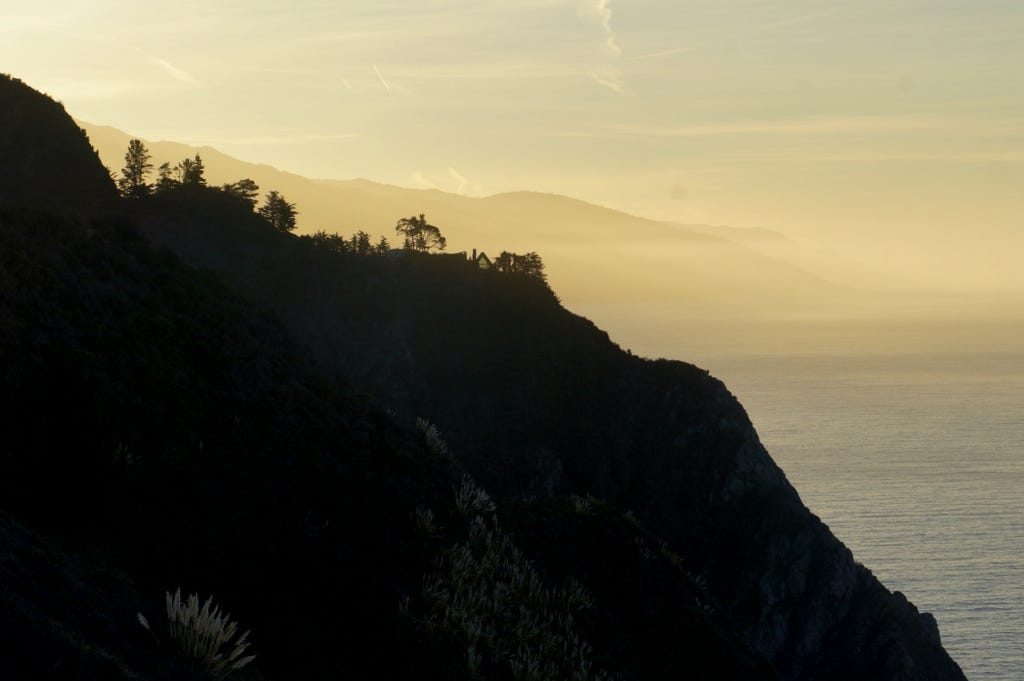
Sunrise in Big Sur.
Time in nature is a focus during this trip, and Saturday was a perfect example of why living in a van is (usually) worth it. We woke up in Big Sur parked in our little house-on-wheels atop a cliff with the ocean waves rolling in far below, 180 degree view opening up to the south and north. The stellar sunny weather continues – good for exploring, bad for water supplies and unfortunately great for forest fires, one of which just raged for a week just prior to our arrival. There was still a slight tint of smoke in the air on days with no wind that made our throats scratchy in the morning. Today was clear, and a couple far-off gray whale spouts were occasionally spotted by my eagle-eyed wife with her trusty binoculars.
Nothing but a gasping cell signal, and so with work shut off for the weekend it was time to go searching for a famous Big Sur animal: the California Condor. Hunting, poisoning,and habitat destruction drove them almost to the point of extinction back in the 1980s (at one point there were only 22 total birds remaining ), and now rehabilitation efforts have reintroduced them to the wild. That said, there are still only 237 California Condors in the wild, with about 67 birds soaring the coast of Big Sur and over the hill to the east in Pinnacles State Park. They are one of the rarest bird species on the planet and can live to be 60 years old!
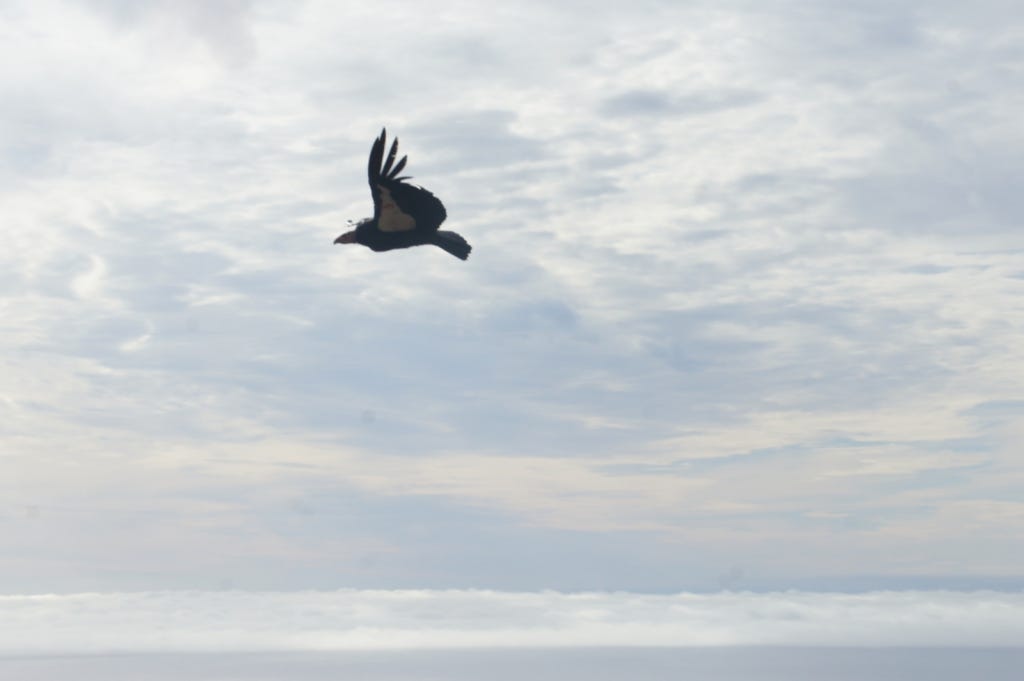
A condor soaring by above the clouds.
We’d kept an eye out for them on our way south and Julia Pfeiffer Burns State Park is where we found them. Three bald-headed beauties perched on redwood trees overlooking McWay Falls searching for food. In case you haven’t seen one, condors are big birds! Up to an 10 foot wingspan, with huge fingered feathers at the tips of their wings. Their feathers are black, with white underpinning that looks like a giant V when they’re flying overhead. I found it quite interesting that they poop on their legs to cool off when the sun is really hot. Here’s a free tip kids: That's not recommended when you’re hanging out at the beach.
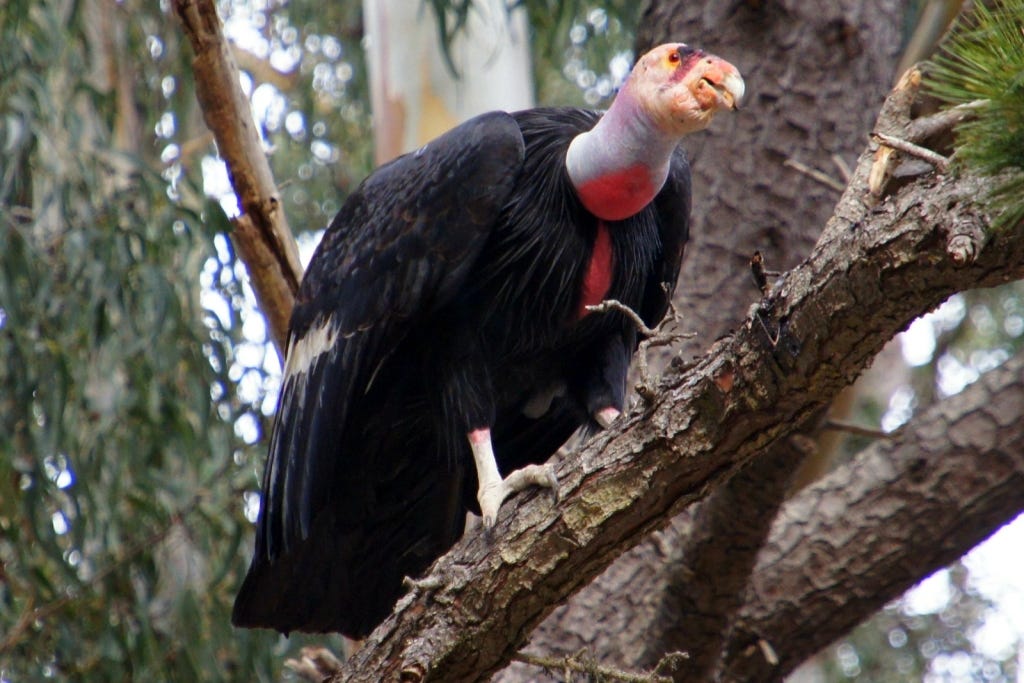
Kingpin, master of the Big Sur condor flock.
They may soar in the wind, but first we saw them hopping around in trees like bumbling cows. They thrash around, shouldering one another for space on a bouncing tree branch, crashing their wings into the tree trying to get steady, then careen off – whoosh whoosh whoosh – to another tree, big wings loudly pushing air. Carrion, dead rotting meat, is their food of choice, and so when one of them puked up some grub on a tourist’s car, the owners were practically gagging at the smell. We may have chuckled a bit at that… Only because they didn’t vomit on the Sprinter! Interestingly, condors do not have a sense of smell, a handy evolutionary adaptation when you spend meals with your beak buried in a carcass.

Kingpin shows an intruder who's boss.
Two of the three condors we watched were #67 and #90. Referencing CondorSpotter.com, #67 is Kingpin, the most dominant gangster condor in the region. He gets first dining privilege on fresh carrion, and lays down the law when less powerful flock members cross his path. #90 is Redwood Queen, a lovely female bird formerly known as “Slope Slug” for not leaving the mountain slopes of her initial release point. She also was mislabeled as a male, which researchers figured out when she and Kingpin mated and she laid an egg in a Coastal Redwood, which is the first known time a condor nested in a redwood. California condors mate for life and typically lay an egg every other year.

Redwood Queen, tag #90, atop a redwood. She mates with Kingpin, the dominant male in the region.
Our time in the park included a solid six mile hike up a ridge overlooking the ocean. We could see condors circling below, and full panorama views of the coast. Grabbing some lunch, WHOOSH Kingpin rips by on an air thermal 15 feet away, scanning the valley below with wings outstretched, soaring away. Not to be disappointed, this happened another couple times on our hike up the ridge. I’ve never been so close to such a large bird.
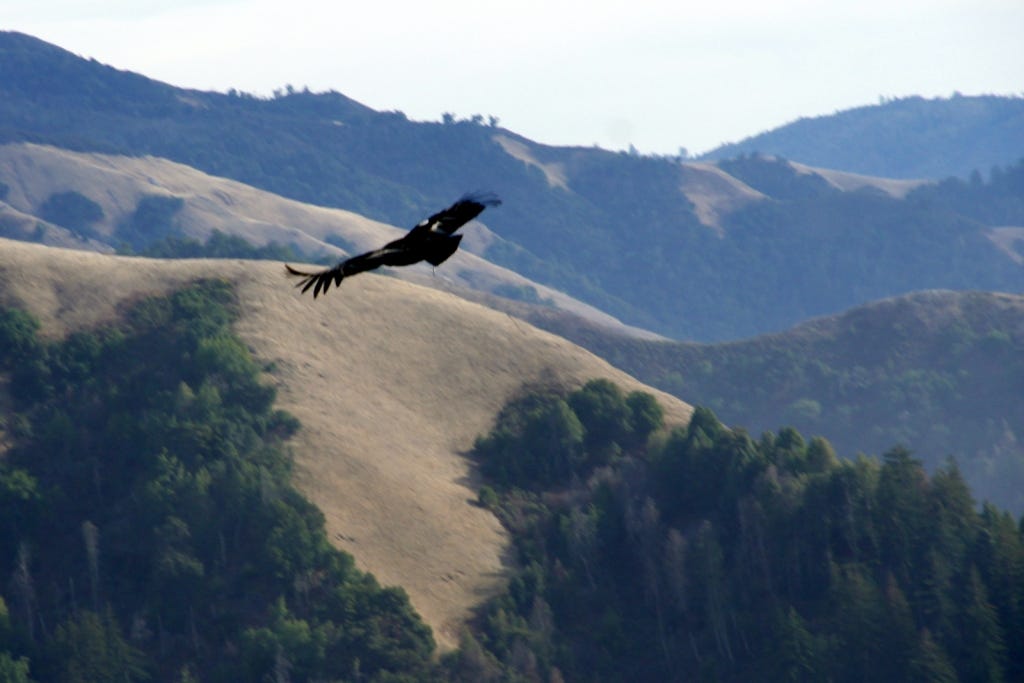
Kingpin buzzing right by us high up on Ewoldsen Loop trail. A little slow (and blurry) with the shot...
It was enlightening to witness a creature so close to extinction and think about their tenuous grasp on survival. Living in the city, it’s so easy to forget about other animals and how nearly impossible it must be to survive with all the forces stacked against them with dwindling habitat to call home. I’m thankful for the foresight of people wise enough to set aside protected space for them to call home, and also for the efforts of those who spent time preserving birds like this for the future.
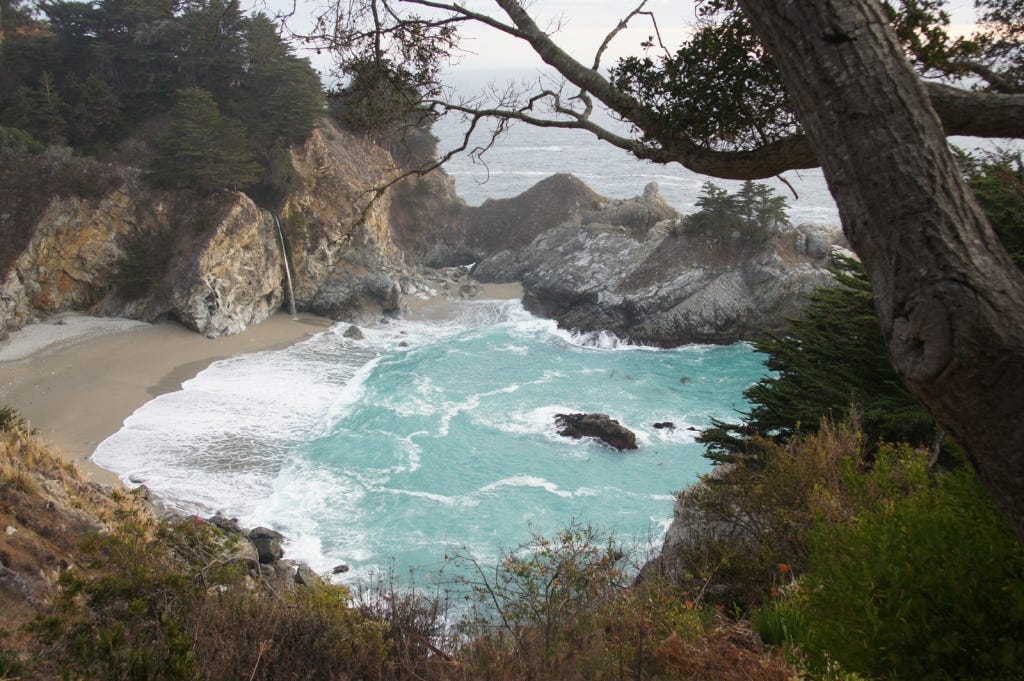
Nice blue bay in Julia Pffeifer Burns State Park, with McWay Falls pouring out of the cliff.
Thanks to my fact checker and editor Chelsea, who corrected all the things I made up about condors for this post. I'm just the hired gun around here.
Over and out from San Luis Obispo!
Dakota
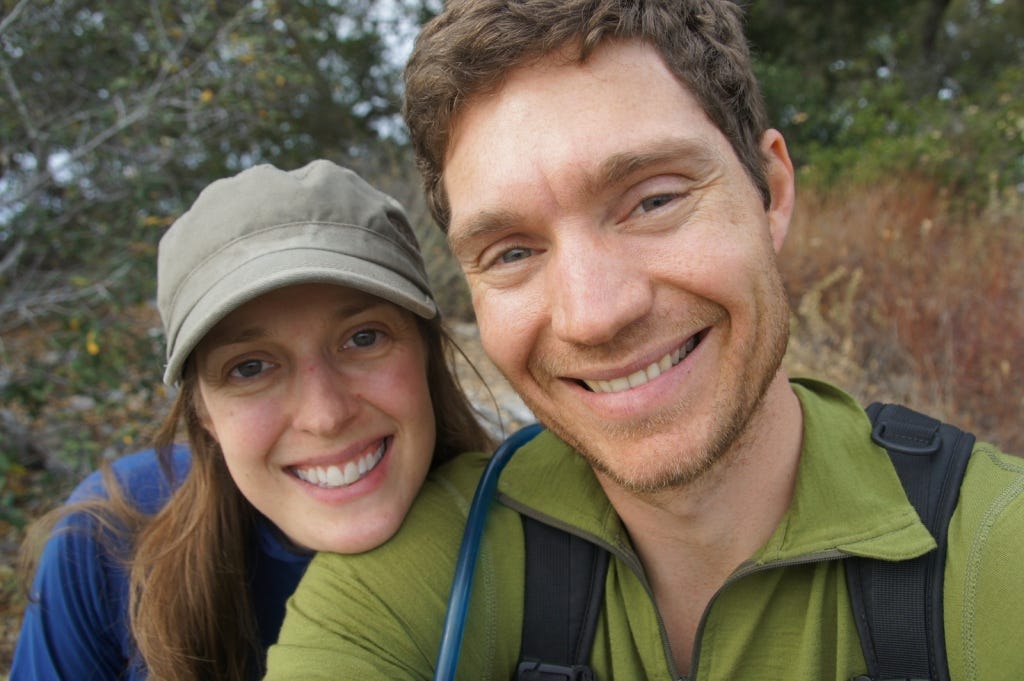
Ten days in Big Sur will make you grin. And forget to shave! (On top of Overlook Trail.)


